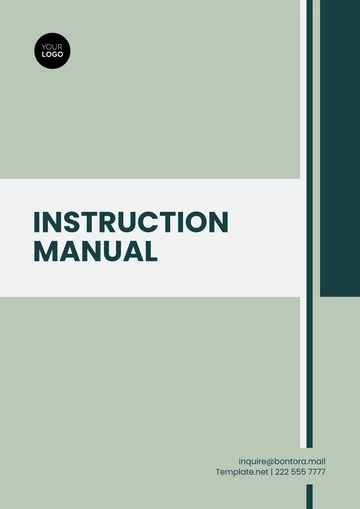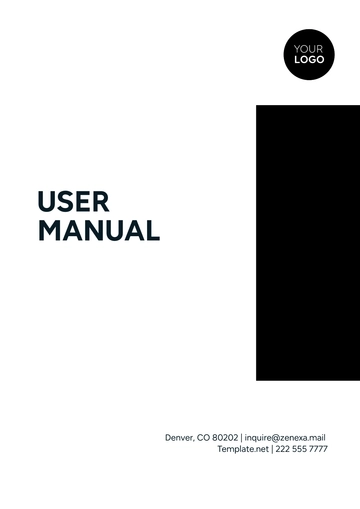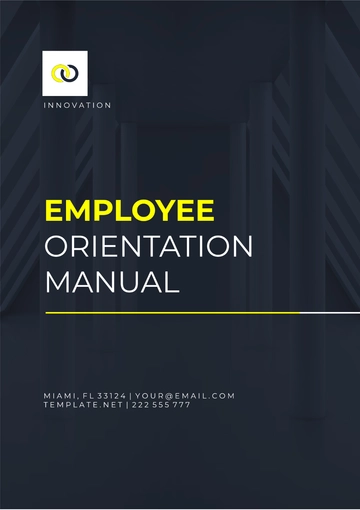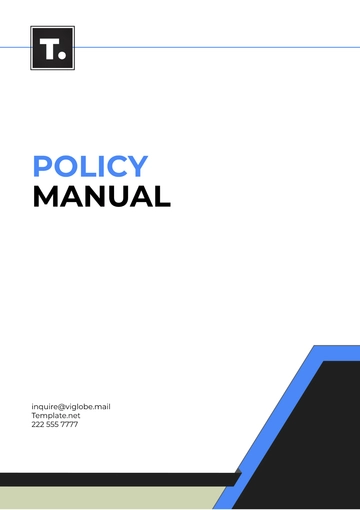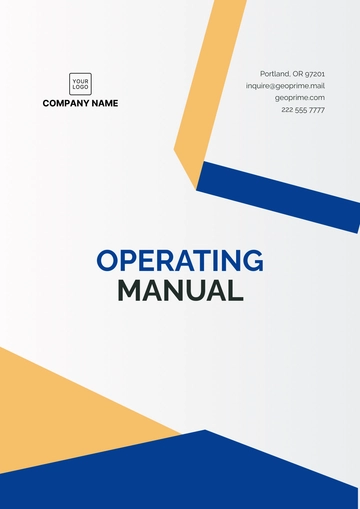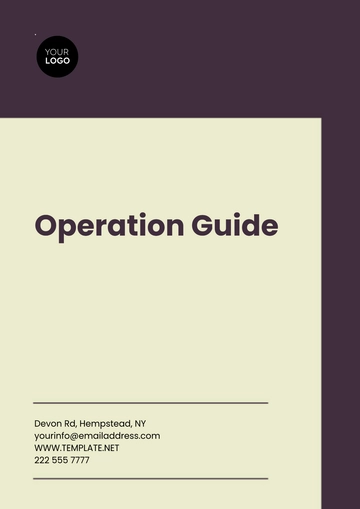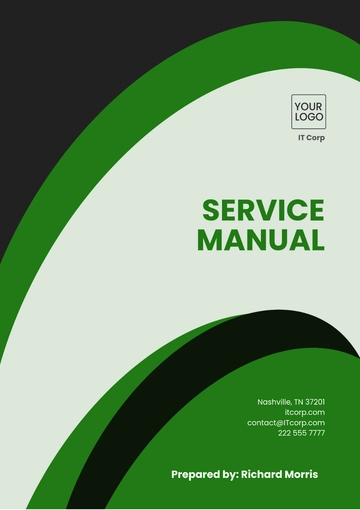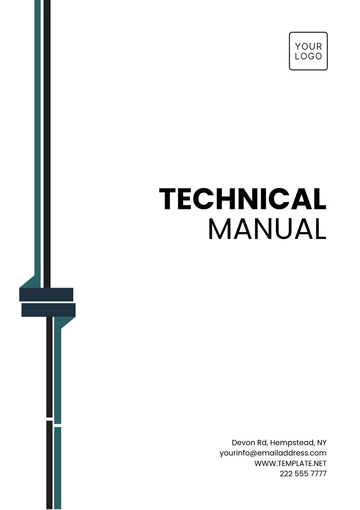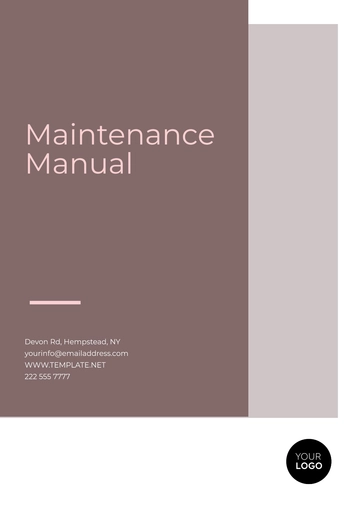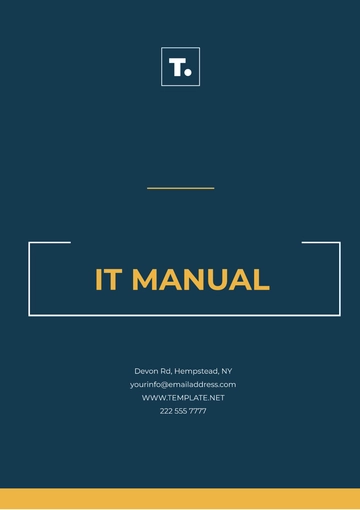Free Legal Aspects of Remote and Flexible Work Manual HR
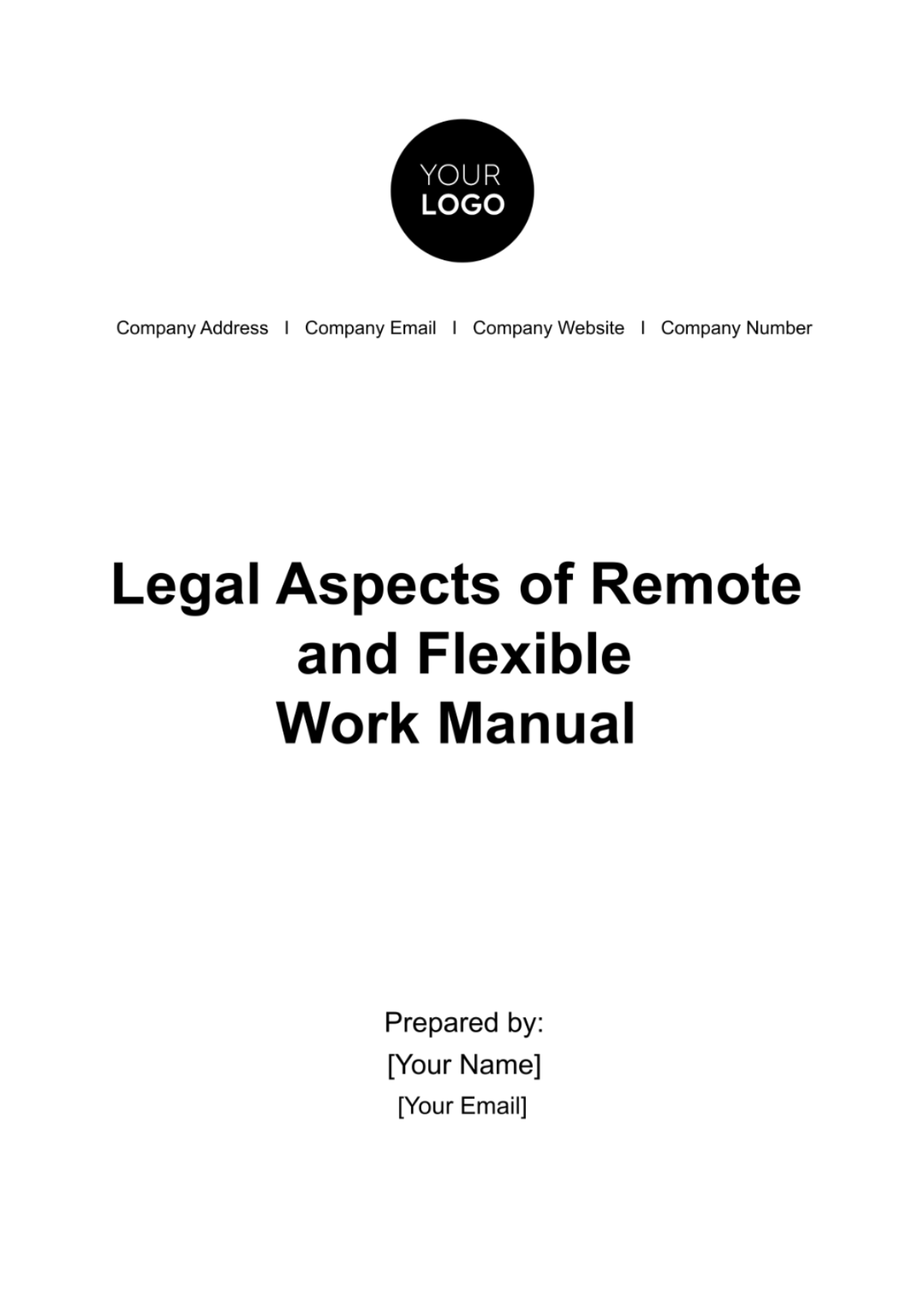
TABLE OF CONTENTS
A. Introduction ................................................................................................................3
B. Legal Framework .......................................................................................................3
B.1 Employment Contracts ............................................................................................3
B.2 Wage and Hour Laws ..............................................................................................4
B.3 Tax Implications .......................................................................................................4
B.4 Health and Safety Regulations ..............................................................................4
C. Data Security and Privacy ........................................................................................5
C.1 Data Protection Laws ..............................................................................................5
C.2 Confidentiality .........................................................................................................6
D. Employment Discrimination ......................................................................................6
D.1 Equal Employment Opportunity (EEO) ...................................................................6
D.2 Accommodations for Disabilities ...........................................................................7
E. Intellectual Property ..................................................................................................7
E.1 Ownership of Work Product ....................................................................................7
E.2 Non-Disclosure Agreements ..................................................................................8
F. Workers' Compensation ............................................................................................8
F.1 Work-Related Injuries ...............................................................................................8
F.2 Reporting Procedures .............................................................................................8
G. Termination and Remote Work .................................................................................9
G.1 Termination Policies .................................................................................................9
G.2 Return of Company Property .................................................................................9
H. Conclusion ...............................................................................................................10
Introduction
Remote and flexible work arrangements have become increasingly common in the modern workplace. While these arrangements offer benefits such as improved work-life balance and increased productivity, they also bring forth a range of legal considerations that employers and employees must understand and navigate. This manual serves as a comprehensive guide to the legal aspects of remote and flexible work at [Company Name].
Legal Framework
B.1 Employment Contracts
All remote and flexible work arrangements at [Company Name] are governed by employment contracts. These contracts outline the terms and conditions of employment, including work hours, compensation, and expectations. It's crucial for both employers and employees to review and understand these contracts thoroughly before engaging in remote work.
Employment Contract Clause:
Clause Title | Content |
Work Hours | The employee agrees to work remotely for [X] hours per day, [X] days per week. |
Compensation | Compensation for remote work will be at the standard rate as specified in the employment contract. |
Reporting Structure | The employee will report to [Supervisor's Name] for remote work assignments and performance evaluations. |
Termination | Termination of remote work arrangements may occur in accordance with company policies. |
Confidentiality | The employee agrees to maintain the confidentiality of company information and data while working remotely. |
B.2 Wage and Hour Laws
Remote employees are entitled to the same wage and hour protections as in-office employees. Employers must adhere to wage laws, including minimum wage and overtime pay, in accordance with local, state, and federal regulations. Tracking remote employees' working hours accurately is essential to compliance.
Wage and Hour Compliance:
Regulation | Compliance Requirement |
Minimum Wage | Ensure that remote employees are paid at or above the minimum wage rate set by the applicable jurisdiction. |
Overtime Pay | Accurately track and compensate remote employees for overtime work as mandated by law. |
Recordkeeping | Maintain accurate records of remote employees' working hours and wage payments. |
B.3.Tax Implications
Remote work can impact both employers and employees regarding tax obligations. Employers may need to consider state and local tax laws, while employees may need to address tax withholdings, deductions, and reporting for the locations where they perform remote work.
Tax Consideration: State Income Tax:
Employees residing in different states may be subject to state income tax laws. Employers should work with their payroll departments to ensure compliance with state-specific tax requirements. |
B.4 Health and Safety Regulations
Employers are responsible for the health and safety of remote workers, just as they are for in-office employees. Ensuring that remote work environments are safe and compliant with relevant regulations is vital.
Health and Safety Measures:
Health and Safety Regulation | Implementation by [Company Name] |
Ergonomic Equipment | Provide remote employees with ergonomic furniture and equipment to prevent workplace injuries. |
Home Office Safety Guidelines | Share guidelines with remote employees for creating safe home office environments. |
Reporting Safety Concerns | Establish a procedure for remote employees to report safety concerns and incidents. |
Data Security and Privacy
Remote work often involves accessing and handling sensitive company data. Employers must take measures to ensure data security and protect employee privacy.
C.1 Data Protection Laws
Data protection laws, such as the General Data Protection Regulation (GDPR) and the Health Insurance Portability and Accountability Act (HIPAA), apply to remote work when personal or sensitive data is involved. Employers should ensure that remote employees comply with these regulations.
Data Protection Requirement:
Data Protection Regulation | Implementation by [Company Name] |
Data Encryption | Require remote employees to use encrypted connections and devices when accessing company data. |
Data Access Controls | Implement strict access controls to limit who can access sensitive company data. |
Data Breach Reporting | Establish a procedure for remote employees to report data breaches promptly. |
C.2 Confidentiality
Maintaining confidentiality is essential when employees work remotely. Employers must have clear policies in place to protect sensitive company information.
Confidentiality Policy:
Confidentiality Policy | Implementation by [Company Name] |
Non-disclosure Agreements | Require remote employees to sign non-disclosure agreements to protect company trade secrets and proprietary information. |
Secure Document Handling | Instruct remote employees on secure document handling, including shredding and secure storage. |
Data Access Logging | Implement logging mechanisms to monitor and trace data access by remote employees. |
Employment Discrimination
Remote work arrangements should not result in employment discrimination. Employers must ensure that all employees, regardless of their work location, are treated fairly and equally.
D.1 Equal Employment Opportunity (EEO)
Stellar Tech is committed to providing equal employment opportunities to all employees, including those who work remotely. Discrimination based on race, color, religion, sex, national origin, age, disability, or any other protected status is strictly prohibited.
Equal Employment Opportunity Clause:
Anti-Discrimination Policies: Enforce anti-discrimination policies and conduct regular training to prevent discrimination in remote work settings.
Equal Access to Opportunities: Ensure that remote employees have equal access to job opportunities, promotions, and career development.
D.2 Accommodations for Disabilities
Remote employees with disabilities are entitled to reasonable accommodations to perform their job duties. Employers should engage in an interactive process to determine appropriate accommodations.
Accommodation Process:
Interactive Process: Engage in an interactive process with remote employees to identify reasonable accommodations.
Document Accommodation Requests: Maintain records of accommodation requests and outcomes.
Training on Accommodation Procedures: Train HR and management on the accommodation process for remote workers.
Intellectual Property
Intellectual property (IP) concerns can arise in remote work situations, especially when employees create content or inventions as part of their job duties.
E.1 Ownership of Work Product
Clear policies on the ownership of work products should be established to prevent disputes over intellectual property rights.
Ownership of Work Product Clause:
Work-for-Hire Agreements: Utilize work-for-hire agreements to specify that the company retains ownership of work produced by remote employees during employment.
IP Reporting and Documentation: Require remote employees to report and document IP creations during remote work.
E.2 Non-Disclosure Agreements
Non-disclosure agreements (NDAs) are essential to protect confidential company information when remote employees have access to sensitive data.
Non-disclosure Agreement Clause:
NDA Requirement: Mandate that remote employees sign NDAs to protect company secrets and proprietary information.
NDA Training and Enforcement: Conduct NDA training and enforce agreements rigorously to prevent unauthorized disclosure of information.
Workers' Compensation
Remote employees are eligible for workers' compensation benefits if they sustain work-related injuries or illnesses.
F.1 Work-Related Injuries
Employees must report any work-related injuries or illnesses promptly, and employers must investigate and document these incidents.
Reporting Procedures:
Reporting Work-Related Injuries | Implementation by [Company Name] |
Reporting Procedure | Establish a clear procedure for remote employees to report work-related injuries or illnesses. |
Investigation and Documentation | Investigate and document work-related incidents to determine eligibility for workers' compensation benefits. |
F.2 Reporting Procedures
In case of work-related injuries or illnesses, remote employees should be aware of the reporting procedures and how to seek medical attention if necessary.
Workers' Compensation Benefits:
Workers' Compensation Benefits | Implementation by [Company Name] |
Benefits Eligibility and Coverage | Communicate the eligibility criteria and coverage for workers' compensation benefits to remote employees. |
Medical Care and Compensation | Provide information on medical care coverage and compensation for remote employees who qualify for benefits. |
Termination and Remote Work
Termination of remote work arrangements may occur for various reasons. It's important to have policies in place to manage this process effectively.
G.1 Termination Policies
Termination policies should clearly outline the circumstances under which remote work arrangements may be terminated.
Termination of Remote Work Arrangements | Implementation by [Company Name] |
Termination Grounds | Specify the grounds on which remote work arrangements may be terminated, such as performance issues or changes in job duties. |
Notice Period | Define the notice period required for termination and any related compensation or benefits. |
G.2 Return of Company Property
Upon termination of remote work arrangements, remote employees should be instructed on the return of company property, data, and documents.
Procedure:
Return of Company Property | Implementation by [Company Name] |
Return Process | Outline the process for returning company-owned equipment, documents, and data upon termination. |
Data Removal and Security | Ensure the secure removal of company data from remote employee devices and accounts. |
Conclusion
This comprehensive manual serves as an invaluable resource, a guiding light amidst the evolving landscape of remote and flexible work at [Company Name]. It's a compass that points both employers and remote employees in the right direction as they navigate the intricate web of legal considerations in this dynamic work environment.
Understanding the Legal Framework: At the heart of this manual lies a deep understanding of the legal framework governing remote work. By grasping the nuances of employment contracts, wage and hour laws, tax implications, health and safety regulations, and the diverse array of legal factors at play, you're not just following the rules; you're ensuring a solid legal foundation for remote work.
Championing Data Security and Privacy: In an era where data is king, safeguarding sensitive information is paramount. This manual equips you with the knowledge needed to fortify data security and respect privacy rights.
Promoting a Culture of Inclusion: The legal aspects of remote work aren't confined to contracts and regulations; they extend to promoting a culture of inclusion and equity.
Guardians of Intellectual Property: Intellectual property isn't just about patents and copyrights; it's about the innovative spirit that propels organizations forward.
Prioritizing Well-Being through Workers' Compensation: When it comes to the well-being of remote employees, workers' compensation isn't just a legal requirement; it's a lifeline. This manual ensures that you're well-versed in the procedures, benefits, and responsibilities related to work-related injuries or illnesses. It's a commitment to the health and safety of every member of the Stellar Tech family.
Navigating Termination with Grace: Even when remote work arrangements come to an end, it's essential to do so with dignity and respect. The termination policies outlined here provide a roadmap for fair and transparent terminations, ensuring that every remote employee departs with clarity and fairness.
For any further questions or clarifications regarding the content of this manual, please contact Jane at jane@email.com or 222 555 777.
Your adherence to these guidelines is critical to ensuring a productive and legally compliant remote work environment.
Updated: July 12, 2053
- 100% Customizable, free editor
- Access 1 Million+ Templates, photo’s & graphics
- Download or share as a template
- Click and replace photos, graphics, text, backgrounds
- Resize, crop, AI write & more
- Access advanced editor
Introducing our Legal Aspects of Remote and Flexible Work Manual HR Template–your comprehensive guide to navigate the complex legal landscape of remote work. This meticulously crafted resource empowers employers and employees with essential knowledge on contracts, data privacy, anti-discrimination policies, IP rights, workers' compensation, and more. Ensure legal compliance effortlessly.
